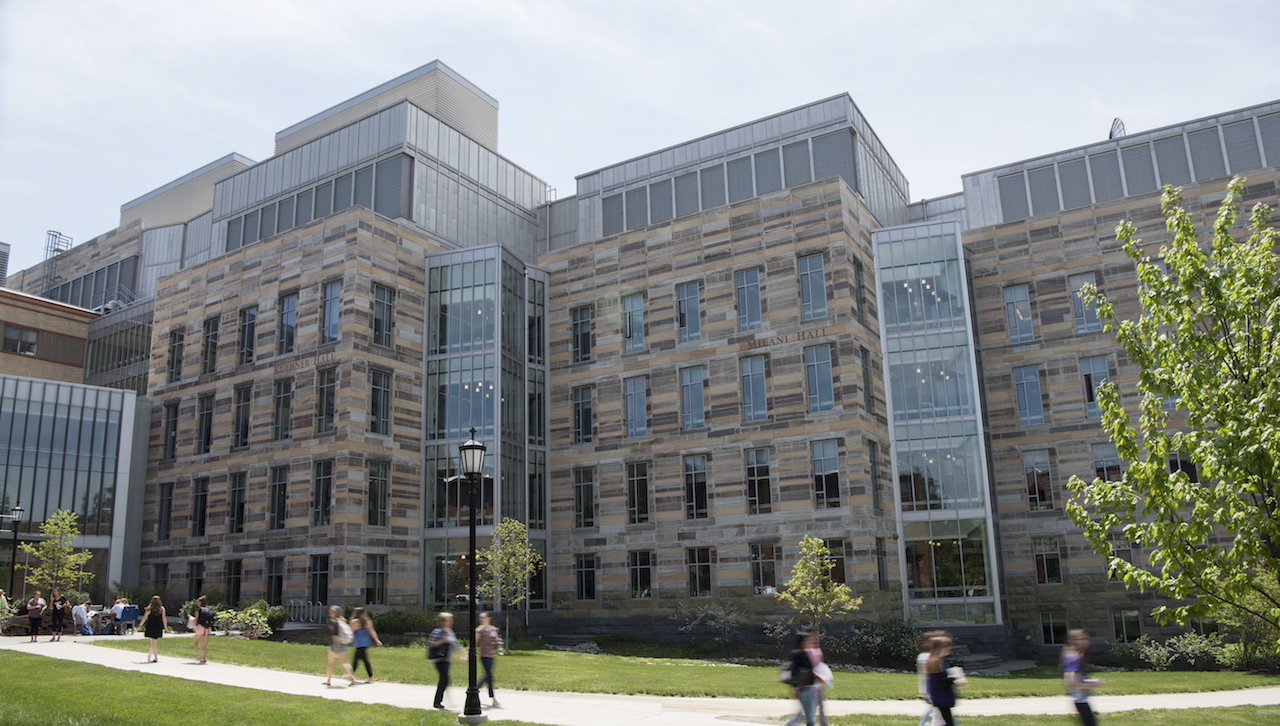Brain Bee Competition for High School Students

Ask any ninth-grade Brain Bee participant and she – or he – will tell you “the cerebrum is the largest part of the human brain and is associated with higher-order functioning that includes the control of voluntary behavior such as thinking, perceiving, planning and understanding language.” That is according to “Brain Facts,” a book about the brain and nervous system published by the Society for Neuroscience that is the source of questions for the annual competition open to students in grades 9 through 12.
The Brain Bee participant can also tell you that “infants sleep up to 18 hours per day, while older adults may sleep only six to seven hours.”
The University of Scranton will host the 19th annual Northeast PA Brain Bee on Saturday, Feb. 3. The competition will begin at 1 p.m. in the Loyola Science Center on the University’s campus.
Sponsored by the Neuroscience Program at the University and the Scranton Neuroscience Society, the Brain Bee is offered free of charge, however, registration is required to participate. The registration deadline is Wednesday, January 31.
The competition encourages high school students to study the brain and how it relates to intelligence, memory, emotions, sensations, movements, stress, aging, sleep and brain disorders. All questions for the competition will be drawn from “Brain Facts.”
In previous years, students competing represented schools from throughout Northeast Pennsylvania, including: Abington Heights High School, Lackawanna Trail High School, MMI Preparatory School, Parkland High School, Pittston Area High School, Pocono Mountain East High School, Riverside Junior/Senior High School, Stroudsburg Area High School, Wallenpaupack Area High School, Western Wayne High School, Wyoming Area High School and Valley View High School, among others.
For more information or to register online, visit https://sites.google.com/site/nepabrainbee/ or contact Robert Waldeck, Ph.D., neuroscience program director and associate professor of biology at the University, at 570-941-4324 or robert.waldeck@scranton.edu.
Snow date for the Brain Bee is Saturday, Feb. 10.
Although sleep appears to be a passive and restful time, it actually involves a highly active and well-scripted interplay of brain circuits, resulting in sleep’s various stages. These stages were discovered in the 1950s through experiments using electroencephalography (EEG) to examine human brain waves. Researchers also measured movements of the eyes and the limbs.
The results of these experiments were telling. Researchers found that each night, over the course of the first hour or so of sleep, the brain progresses through a series of stages during which brain waves slow down. This period of slow wave sleep is accompanied by relaxation of the muscles and the eyes. Heart rate, blood pressure, and body temperature all fall. If awakened during this time, most people recall only fragmented thoughts, not active dreams.
Over the next half hour or so, brain activity alters drastically, from deep slow wave sleep to rapid eye movement (REM) sleep, characterized by neocortical EEG waves similar to those observed during waking. Paradoxically, the fast, waking- like EEG activity is accompanied by atonia, or paralysis of the body’s muscles. Only the muscles that allow breathing and control eye movements remain active. During REM sleep, active dreaming takes place. Heart rate, blood pressure, and body temperature become much more variable. Men often have erections during this stage. The rst REM period usually lasts 10 to 15 minutes.
During the night, these cycles of slow wave and REM sleep alternate, with the slow wave sleep becoming less deep and the REM periods more prolonged until waking occurs. Over the course of a lifetime, the pattern of sleep cycles changes. Infants sleep up to 18 hours per day, and they spend much more time in deep slow wave sleep. As children mature, they spend less time asleep and less time in deep slow wave sleep. Older adults may sleep only six to seven hours per night. What’s more, adults often complain of early waking that they cannot avoid and spend very little time in slow wave sleep.






